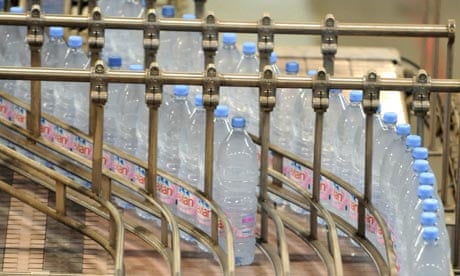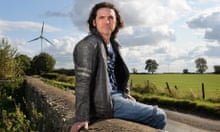Danone, the French food company behind Activia yoghurts, Evian water and Cow&Gate baby food, has left few stones unturned in an ambitious bid to cut its carbon footprint by 30% in the four years to 2012.
Firstly, it has put carbon reduction above all other sustainability goals, believing that, if done right, this will help achieve other environmental targets on water use, packaging, agriculture and biodiversity.
Secondly, it is working on a comprehensive and diverse agenda of initiatives across its value chain. These range from appointing a nature sponsor to its main board of directors, to renewable energy and packaging initiatives, transferring freight from road to rail, planting 70m trees across Africa and Asia through offset schemes, and testing a system that helps farmers boost the nutritional value of milk while also controlling the methane produced by their cows.
Danone frames its business and environmental mission in a particular way. It seeks to promote health through its food and says that the health of the planet, therefore, remains a priority.
But when analysing how best to make its entire value chain more sustainable, it quickly realised that carbon reduction provided an organising principle for its sustainability strategy.
The results appear impressive. The company reduced its footprint by 9% in 2010 and a further 8% the following year. It says it remains on course to achieve a 27% consolidated reduction in emissions in the period 2008-11 and that the final 2012 30% target also remains achievable.
Reaching these milestones has involved a process of corporate reinvention, in governance, policies and processes.
Take governance. As well as a Board Nature Sponsor, it has created a nature department reporting directly to top executives, put environmental directors into every division, created a community of 110 carbon masters across the world to push through reduction plans in every unit, and created a committee to review progress on the nature plan twice a month.
In addition, a CO2 indicator is used to measure all business decisions and general managers and directors have to meet carbon reduction targets as part of their annual bonus calculations.
Operationally, Danone looks to reduce both direct and indirect impacts. Energy use fell by 12% in 2009. Transport emissions were down by 10% between 2009 and 2010 and using recycled materials cut carbon intensity in its packaging, by 6% in the same period. It is also pursuing a Carbon Pact with suppliers and the Danone Fund for Nature, created in 2008, is pursuing five carbon offset programmes in Africa and India.
Simon Beavis is part of the wordworks network
The Guardian Sustainable Business Best Practice Exchange contains articles on all the initiatives that met the criteria for the GSB Awards, demonstrating elements of genuine innovation and forward thinking. Become a GSB Member for regular updates from the network






